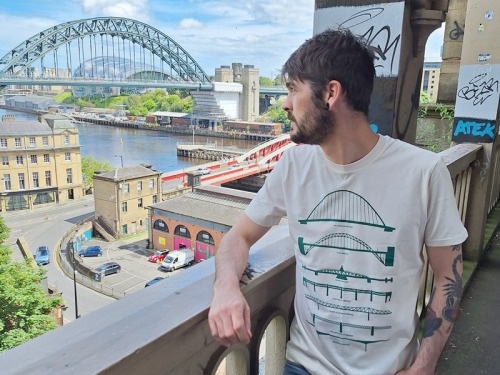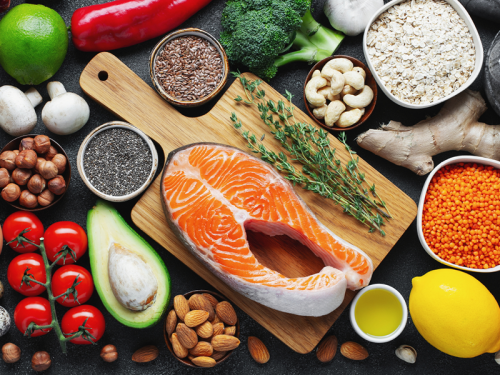Meet the Couple Bringing Spearfishing to Northumberland
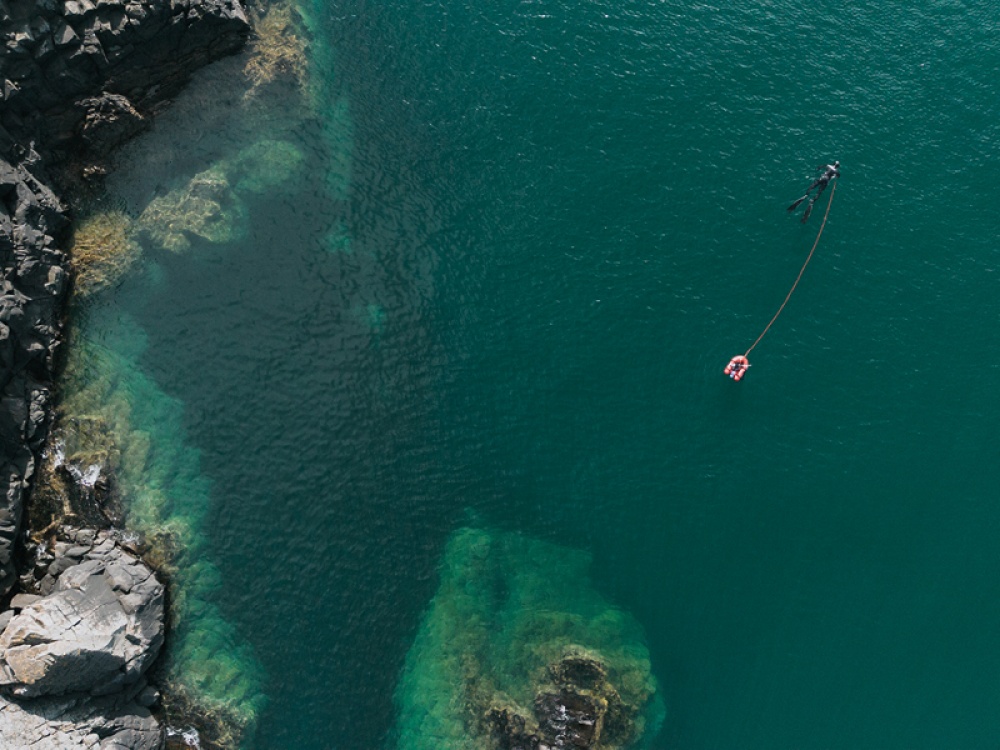
Alnwick-based filmmakers Helen Burt and Pierre Melion have made a short film exploring the fascinating world of spearfishing off the North East coast, in the hope that it encourages people to take advantage of the coast's natural resources
Pierre’s initial interest came from his exposure to different cultures at a younger age. ‘I’m from a Chinese-French background and I was very lucky to experience lots of different food and different cultures. With my father I would do a lot of spearfishing, a thing that you tend to see more across Europe like Portugal, France and Spain,’ he explains. After relocating to the North East, Pierre introduced Helen to the sport and she fell in love with it.
‘Pierre introduced me to free diving and snorkelling and it blew me away,’ she says. ‘It’s a whole new way of seeing all of the beauty that’s under the water that I hadn’t even thought about beforehand. We just got a bit addicted to going out over the summer with the camera and it was just such a nice way to explore the coastline because it’s so varied and beautiful here in the North East.’
The pair soon noticed that what was common practice elsewhere in terms of self-sufficient fishing had not reached the English shoreline in the same way. ‘What I noticed, with the UK being an island, is it has such great seafood all around, but it doesn’t have as much of a culture where people go out and source their own food,’ says Pierre. ‘So our knowledge of seafood, and exposing what’s available on our doorstep, is what pushed us towards making this film and doing this project so we can get people to look at not just cod, tuna and salmon, but loads of different seafood on their doorstep which they might not have known about.’
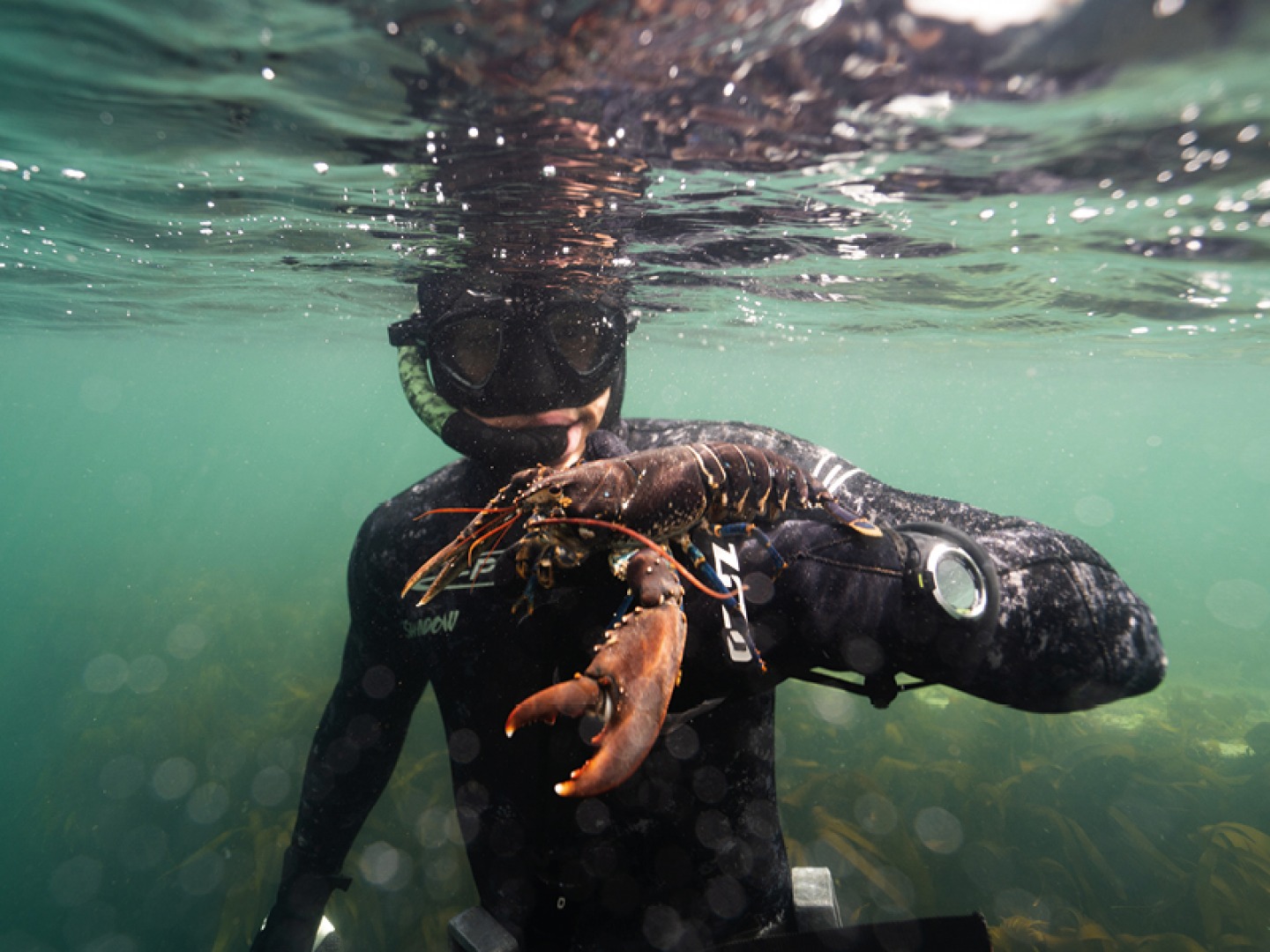

That’s not to say of course, that fishing doesn’t take place in the North East (which has a long and proud seafaring history), but there is so much untapped spearfishing potential. ‘I know that a lot of fishing goes on but not a lot of spearfishing, and when we actually got in the water we realised that not many people have discovered the different types of fish that you find here.’
Much of this, the pair suggest, comes down to a difference in food culture and education, and an avoidance of more exotic seafood, as the UK’s waters are known internationally to produce excellent quality shellfish which local communities aren’t taking advantage of.
‘We’re surrounded by cold water which lends itself to a better quality of seafood because the meat tastes better in colder water. In the south of France you see on the counter seafood like spider crabs – we have loads of those in the UK but we never see them on the table. The selling point for spider crabs in France is that they are from the UK, because they’re from cold water so it’s the best quality,’ Pierre explains. We are missing out on what other countries recognise as top of the range seafood, right on our doorstep.
Along the North East coast, the pair say, the waters are particularly abundant in lobster. ‘If you’re down south you’ll have lots of different fish like sea bass and sea bream, and you don’t see many of those here. But what you do see is really healthy numbers of lobster and that’s great because you can basically go and collect them at low tide. You don’t have to go into deep water either to find them, and that’s probably the biggest draw in terms of what you can catch here.’
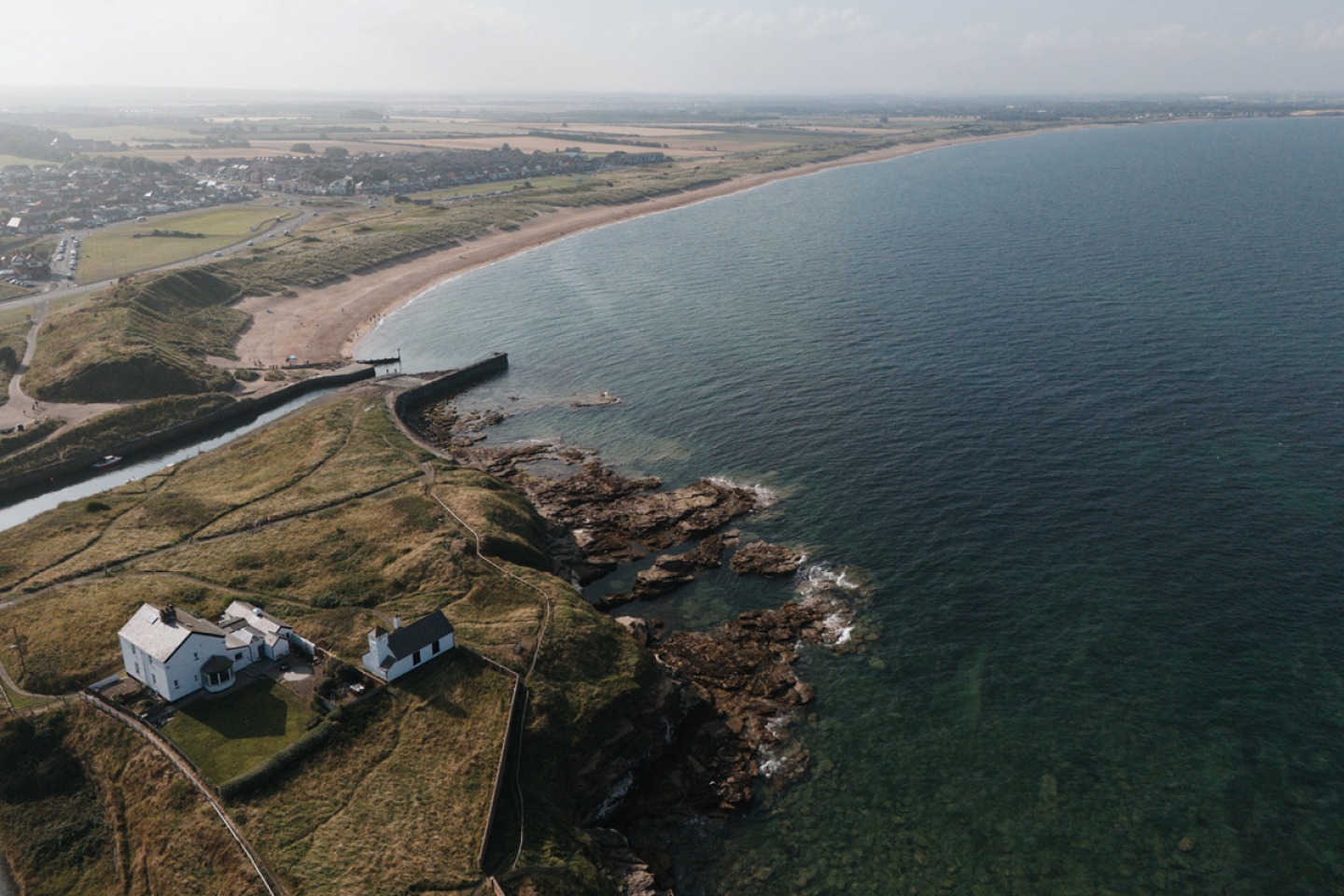
But how can local people access this untapped seafood goldmine? The key, Helen and Pierre say, lies in spearfishing, and the best way to get into spearfishing (permits aside) is by starting with safety measures and confidence. ‘It’s not a super accessible activity because you have to conjure up the courage to get into the water,’ Pierre explains. ‘The first steps would be getting an awareness of the sea and an understanding of the safety elements of it. Then you can slowly start to build your confidence in a way where you can start to identify the different fish and see what you might be able, and what you might not be able, to eat.
‘I’d recommend everyone do a free diving course to start with. Not the conventional route for many but it’s worth doing a course to learn the safety elements of free diving and then do it as a pair, so you’ve always got a buddy with you. Once you start to get confident you need to get yourself a spear gun and just give it a go.’
Helen understands that for those who aren’t familiar with it, they may have reservations. ‘On a surface level the perspective might be that it’s cruel, but it’s actually a really sustainable way of getting food because you only get what you need and you can be selective with the species that you shoot,’ she explains.
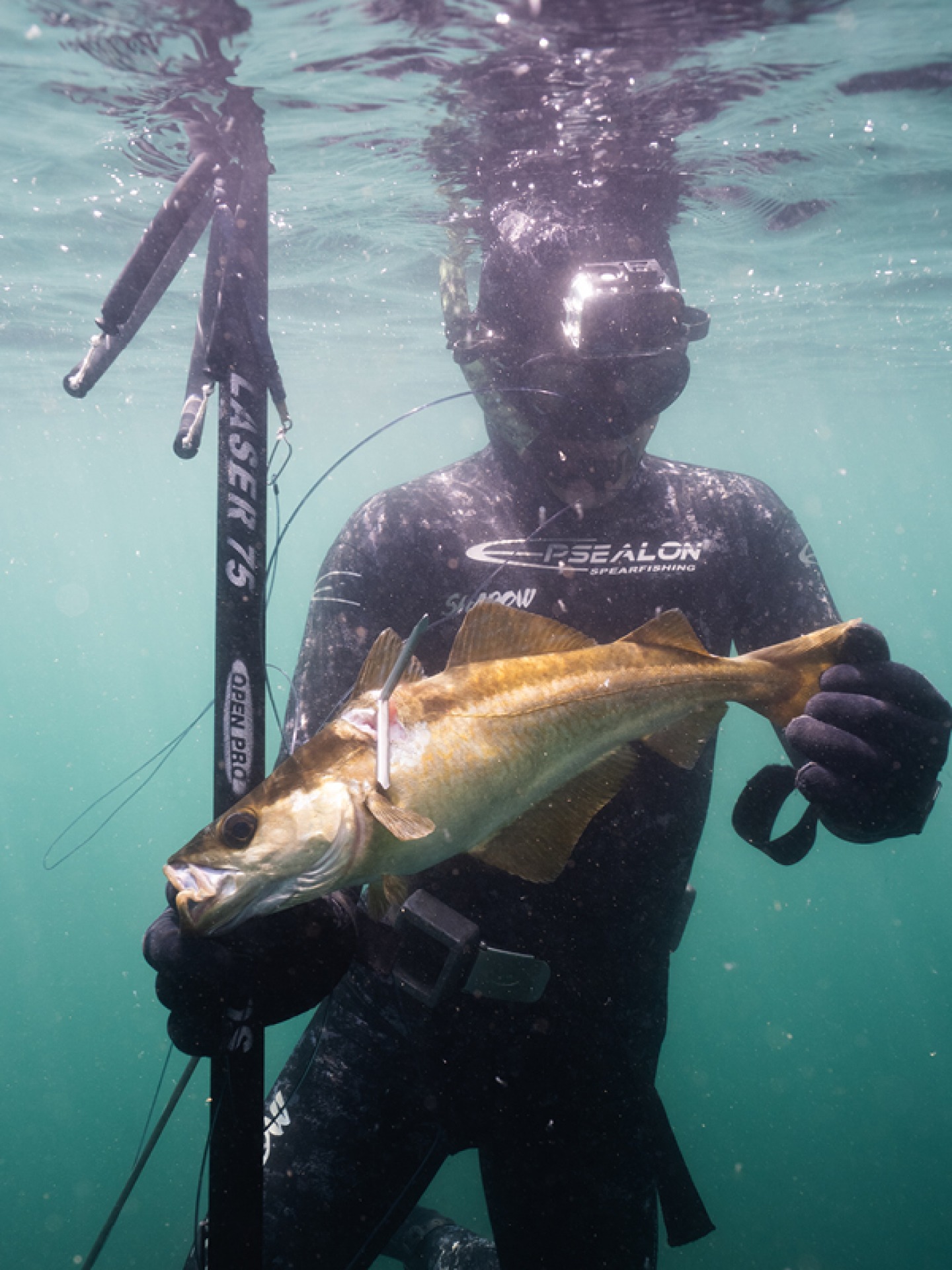
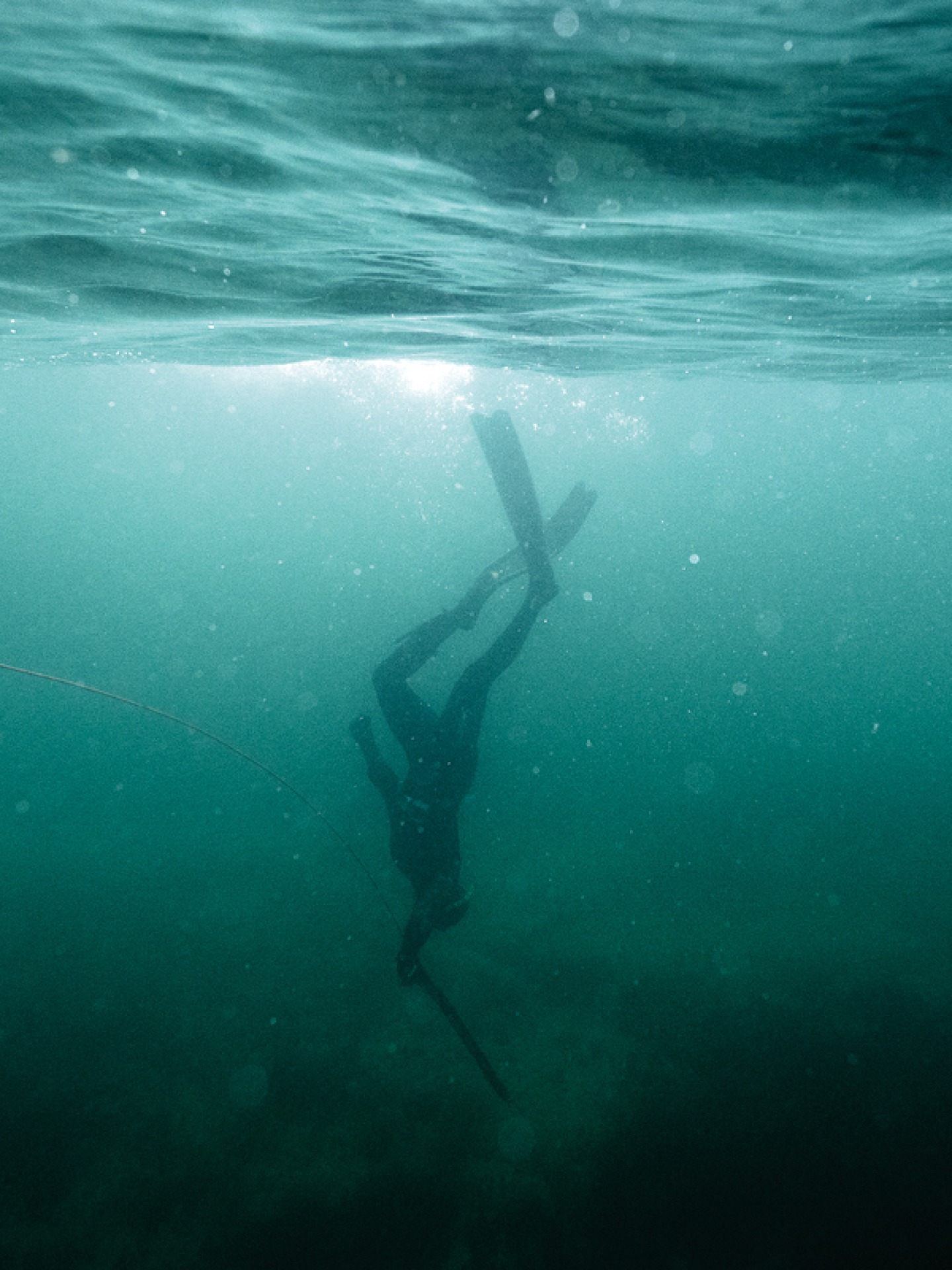

Becoming an expert takes dedication and time, but there are a number of spots along the coast where you might find other likeminded groups. ‘You have to learn how to identify places that might hold fish, places that maybe have kelp, or spend time watching the birds – are they diving or hanging around a specific area? Understanding the tides and how that influences the fish that come close to shore versus the ones that are in deeper water is important too,’ Pierre says. ‘In terms of local spots that we like going to, it’s places like Dunstanburgh Castle, where you’ve got amazing scenery, the birds, the little cove and the ruins, as well lots of fish too. Further south there’s places like Seaton Sluice. That’s a popular area if you want to find other spearfishermen.’
The documentary ‘Trigger Fish’ and their overarching project ‘Tide to Table’ seeks to broaden people’s horizons when it comes to seafood. ‘I would say before meeting Pierre I had very limited food knowledge and he’s exposed me to all the different species of fish and seafood which are actually delicious and local that I wouldn’t have known,’ Helen says. ‘I would have been overwhelmed in terms of what to do with them, or even think of trying them before hand. So it’s about sparking that curiosity and encouraging people to have that excitement with their food.
‘We want to create content and resources on seafood and sourcing food as naturally as possible. We put a website together for the film called Tide to Table and you can watch the short documentary on there. We are going to fill that with resources like videos and blogs to continue to focus on seafood in this area. Our next mini project is creating a book called Fish, Forage and Feast – a short guide to fishing, spearfishing and coastal foraging, and then recipes on what to do with it all.’




